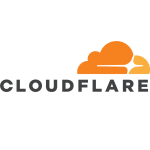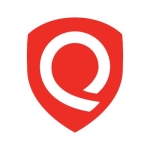What is our primary use case?
I'm using the main module of Prisma Cloud, which manages security at scale in cloud environments.
How has it helped my organization?
Prisma Cloud offers a very interactive UI that lets you work more effectively, faster, and more efficiently. It can also be used as a dashboard for querying the cloud provider since it integrates with most of the APIs of the cloud service providers. It's a very unique tool in the sense that it lets you centralize the security control of all your cloud providers.
What is most valuable?
The first aspect that is important is the fact that Prisma Cloud is cloud-agnostic. It's actually available for the five top cloud providers: AWS, GCP, Azure, Oracle, and Alibaba Cloud.
The second aspect is the fact that we can write our own rules to try to detect misconfigurations in those environments.
And Prisma Cloud is a single tool that protects cloud resources and applications without having to manage and reconcile disparate security and compliance reports. That's the main purpose of the CSPM module of Prisma Cloud: You can manage every cloud platform, every cloud account, from a single place, which is the Prisma Cloud dashboard. It gives you a very high overview of every asset, a full site inventory. And you can see the context as well as the severity of the errors that have been raised on each service and asset that has been deployed in the cloud.
In my experience, Prisma Cloud is a valuable asset for enterprises that tend to have a lot of cloud-native applications and that wish to secure, and take control of the security posture of these applications. One of the most important considerations is that Prisma Cloud is a product from Palo Alto Networks, a company that invests heavily in cyber security. There are a lot of features that have come out over time. In the beginning, Prisma Cloud was known for its CSPM capabilities, but today, Prisma Cloud is doing a lot of things that are very beneficial for cloud-native applications.
What needs improvement?
There are a couple of things that can be enhanced. The first is the coverage that Prisma offers. Today, there are hundreds of built-in policies for AWS and Azure, but GCP and Oracle are not covered as much as AWS. There is a lot of work to do on that part. There is, obviously, a tiny bit of favoritism towards AWS because it has the most market share. It's logical, but the other cloud providers are not as well covered as AWS.
The second issue is the alerting process. Today, it does monitor the resources—and I'm only speaking on the CSPM side of things. Prisma Cloud scans the environment and checks if there are misconfigurations, but it lacks context. There is a real lack when it comes to taking into consideration how the application was designed. For example, you can have an application that is deployed with an open S3 bucket, which is one of the most basic services in AWS. Prisma will tell you that there is a high-severity alert because, with that bucket, there is a possibility of having your data extracted. But sometimes, the data inside those buckets is actually public. So, the process lacks some intelligence.
For how long have I used the solution?
I've been using Prisma Cloud by Palo Alto Networks for 10 months.
What do I think about the stability of the solution?
I'm using the SaaS version which is running on Palo Alto's infrastructure, so I've never encountered instability.
There is some patching behind Prisma Cloud when Palo Alto delivers new features so there are some "patch intervals," but most of the time, Palo Alto does notify you when something like that is coming up. It will say, "Hi. This Friday, the application will be unavailable from 6:00 PM to 7:00 PM." But it is not very disturbing at all.
What do I think about the scalability of the solution?
Because I'm using the SaaS version, there is no issue with scalability. It all depends on the credits and the amount of money that you have put into the tool. Aside from that, you can use it to onboard any cloud account no matter how many resources are in it.
How are customer service and support?
I have contacted their tech support many times, and they are pretty quick. They are very invested and proficient. I get answers within a day or two, at most.
Sometimes, when an issue becomes pretty complicated, it can span a week because it is transferred to different people.
How would you rate customer service and support?
Which solution did I use previously and why did I switch?
I did not use another solution before Palo Alto.
What was our ROI?
We have definitely seen ROI in that using Prisma Cloud is an eye-opener regarding cloud security. In general, Prisma Cloud helped us see a lot of blind spots that we left when designing applications. There were a lot of security misconfigurations that we wouldn't have been able to spot without Prisma. The return on value is in the securing of the applications that we are deploying, as well as through a better understanding of the types of issues in the type of environment.
What's my experience with pricing, setup cost, and licensing?
The cost is run by credits. You can allocate them as you wish, so there are no issues there. I believe the credits, licensing, et cetera, are based on the size of the enterprise that is buying the product.
There are no additional costs beyond the standard fees.
Which other solutions did I evaluate?
Wiz was one of the tools we looked at. I was not the only one who made the choice, but we went with Prisma because of its capabilities as well as the support. We are investing a lot in Palo Alto Networks, meaning we use a lot of their products, so we know the enterprise itself. We know the quality of their catalog of services.
What other advice do I have?
My advice is to take your time before going the CSPM route. Look at your environments and inventory everything in it. There is, obviously, no shadow IT in the cloud. It's very easy to get an inventory of the resources you are running on. Get an overview and see if having a powerful CSPM at your side is really a need. There are a lot of open-source solutions that can do the job for smaller environments.
From what I understand, Palo Alto is trying to push Prisma Cloud to become more than a simple CSP tool, since it offers the ability to cover the global environment of cloud applications, such as doing scanning and infrastructure-as-code, and managing IAM, rather than doing it directly in the cloud provider. They are trying to centralize things.
It can also be used to manage containerized applications. It can do runtime security in container-based managed services of cloud providers, such as EKS (Elastic Kubernetes Service) which is a service managed by AWS. You can rely on Prisma to put an agent in such environments to monitor and supervise the security. You can also use it to scan the container images that are stored in repositories, whether they are on-premises or in the cloud. I've heard that Palo Alto is doing a lot of things like this, but as of today, I'm only using the CSPM part.
And in terms of security automation capabilities, I've used Checkov, which is the tool they are using for scanning specialized code like Terraform. In its origins, Checkov is an open-source tool and I've been using it with my clients by deploying it in CI/CD chains to scan, automatically, the code that is pushed inside repos and deployed in the cloud. But I have never used the Chekhov that is built into Prisma Cloud.
Similarly, I know Prisma offers the possibility of auto-remediation, but I have not enabled this option. It could be a bit dangerous because there is the context and a lot of things to take into consideration before blocking something, before deployment or after deployment. So, I have not used its preventive actions.
The solution provides visibility into complex or distributed cloud environments, but I can think of a couple of scenarios where clients might not think the same. It supports the top five clouds, but if you are using another cloud provider, you won't be able to use Prisma Cloud for that instance. You would be able to use the Compute module, but it would be very hard to use the CSPM capabilities on such a cloud provider since their APIs are not working with Prisma. But if you are using the most commonly used clouds, Prisma Cloud is a very valuable asset.
Prisma Cloud is a very powerful tool and it can be used in various scenarios, but it doesn't cover everything. You might choose a cloud provider that is not supported or prioritized by Prisma. If you are using Oracle Cloud or Alibaba, you might want to get another solution, maybe one that comes with better policies and a better investment in those technologies.
Aside from that, Prisma Cloud is a good solution if you are using a mainstream cloud provider. Prisma Cloud can help enhance your security posture. Because it's a Palo Alto product, you can be sure that there is a lot of maintenance behind it. The product will be able to keep up with the market. They will keep the features coming and it will continue to be a better product over time.
Disclosure: PeerSpot contacted the reviewer to collect the review and to validate authenticity. The reviewer was referred by the vendor, but the review is not subject to editing or approval by the vendor.




















